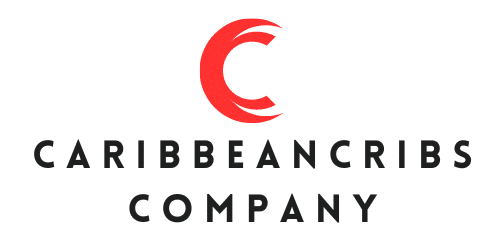Honeycomb cardboard: the eco-friendly packaging revolution

Honeycomb cardboard is transforming packaging with its eco-friendly design. Lightweight yet incredibly strong, this innovative material offers a sustainable alternative to traditional packaging. Its unique structure not only reduces carbon emissions but also lowers waste, aligning perfectly with global sustainability goals. Companies across various industries, from electronics to furniture, are adopting honeycomb cardboard, showcasing its versatility and effectiveness. Discover how this game-changer is shaping the future of packaging and driving the eco-friendly revolution.
Eco-friendly packaging revolution
The eco-friendly packaging revolution is transforming the industry with innovative solutions like honeycomb cardboard. Honeycomb cardboard, made from natural and renewable materials, stands out for its unique structure and sustainable properties. This material features a honeycomb design that enhances durability and reliability, making it an excellent choice for safe product transport.
A voir aussi : Boosting local growth: the power of european regional development
Definition and introduction to honeycomb cardboard
Honeycomb cardboard is a type of sustainable packaging solution characterized by its hexagonal cell structure. This design not only provides strength but also reduces the overall weight of the packaging, leading to lower transportation costs and reduced carbon emissions.
Overview of its eco-friendly properties
One of the primary advantages of honeycomb cardboard is its eco-friendly nature. It is made from recycled paper or renewable resources, consuming less energy and producing fewer greenhouse gas emissions during production. Additionally, it is recyclable, contributing to waste reduction and promoting sustainable development.
Sujet a lire : What Is the Role of NFTs in Authenticating Collectibles for UK Art Dealers?
Importance in the packaging industry
The adoption of honeycomb cardboard in the packaging industry is significant. It offers robust protection for products while being environmentally responsible. Companies like Qidong Meixun have demonstrated that using honeycomb cardboard can lead to reduced costs and improved performance, making it an economical choice for businesses.
Honeycomb cardboard's advantages extend to its versatility and customizability, catering to a wide range of products. This innovation not only addresses environmental concerns but also meets the practical needs of modern packaging solutions.
Benefits of honeycomb cardboard
Honeycomb cardboard offers numerous benefits that make it an ideal choice for innovative eco-friendly packaging. One of the primary eco-material packaging benefits is its enhanced durability and reliability. The hexagonal cell structure provides exceptional strength, ensuring products remain safe during transport. This design also contributes to the environmental benefits of honeycomb design by reducing the overall weight of the packaging, which lowers transportation costs and carbon emissions.
Another significant advantage is its cost-effectiveness. Companies like Qidong Meixun have demonstrated that using honeycomb cardboard can lead to reduced costs and improved performance. This economic benefit makes it a practical choice for businesses looking to balance sustainability with profitability.
Furthermore, honeycomb cardboard contributes to sustainable development. It is made from recycled paper or renewable resources, consuming less energy and producing fewer greenhouse gas emissions during production. This eco-friendly approach not only minimizes waste but also supports broader environmental goals.
In summary, the benefits of honeycomb cardboard are manifold. Its durability, cost-effectiveness, and contribution to sustainable development make it a standout choice for businesses committed to eco-friendly practices.
Applications of honeycomb cardboard
Honeycomb cardboard applications span across various industries, demonstrating its versatility and sustainable nature. In the electronics sector, honeycomb cardboard is used to protect delicate components and devices during shipping. Its hexagonal cell structure ensures that items like laptops and smartphones remain secure, minimizing the risk of damage.
In the glassware industry, cardboard honeycomb provides exceptional shock absorption, safeguarding fragile items such as bottles and glass decorations. This eco-friendly packaging solution is also highly customizable, allowing businesses to tailor the packaging to fit different product sizes and shapes precisely.
Furniture manufacturers benefit from honeycomb board versatility, as it can be adapted to protect large and irregularly-shaped items. Companies like Qidong Meixun have successfully adopted honeycomb cardboard, showcasing its practicality and cost-effectiveness.
By reducing packaging waste and leveraging sustainable industrial packaging, businesses can meet both environmental and economic goals.
Environmental impact and sustainability
Honeycomb cardboard offers significant environmental benefits by reducing carbon emissions and waste production. Made from renewable packaging materials like recycled paper, it consumes less energy during manufacturing, leading to lower greenhouse gas emissions. This eco-friendly approach contributes to reducing carbon footprint with packaging, making it a sustainable choice for businesses.
The recyclability of honeycomb cardboard is another crucial factor. Unlike many traditional packaging materials, honeycomb cardboard is fully recyclable and biodegradable. This means it can be reused or decomposed naturally, minimizing waste and supporting a circular economy. Companies adopting honeycomb cardboard, such as Qidong Meixun, have reported substantial reductions in waste production and operational costs, showcasing its practical and environmental advantages.
Case studies reveal that businesses using honeycomb cardboard benefit from recyclable packaging while enhancing their environmental responsibility. For example, Sandland Packaging has maintained its PAS2060 Carbon Neutral certification for three consecutive years, achieving a 17.15% reduction in its full 3 scope Carbon Footprint. This demonstrates the tangible impact of adopting renewable packaging materials on both environmental sustainability and corporate performance.
